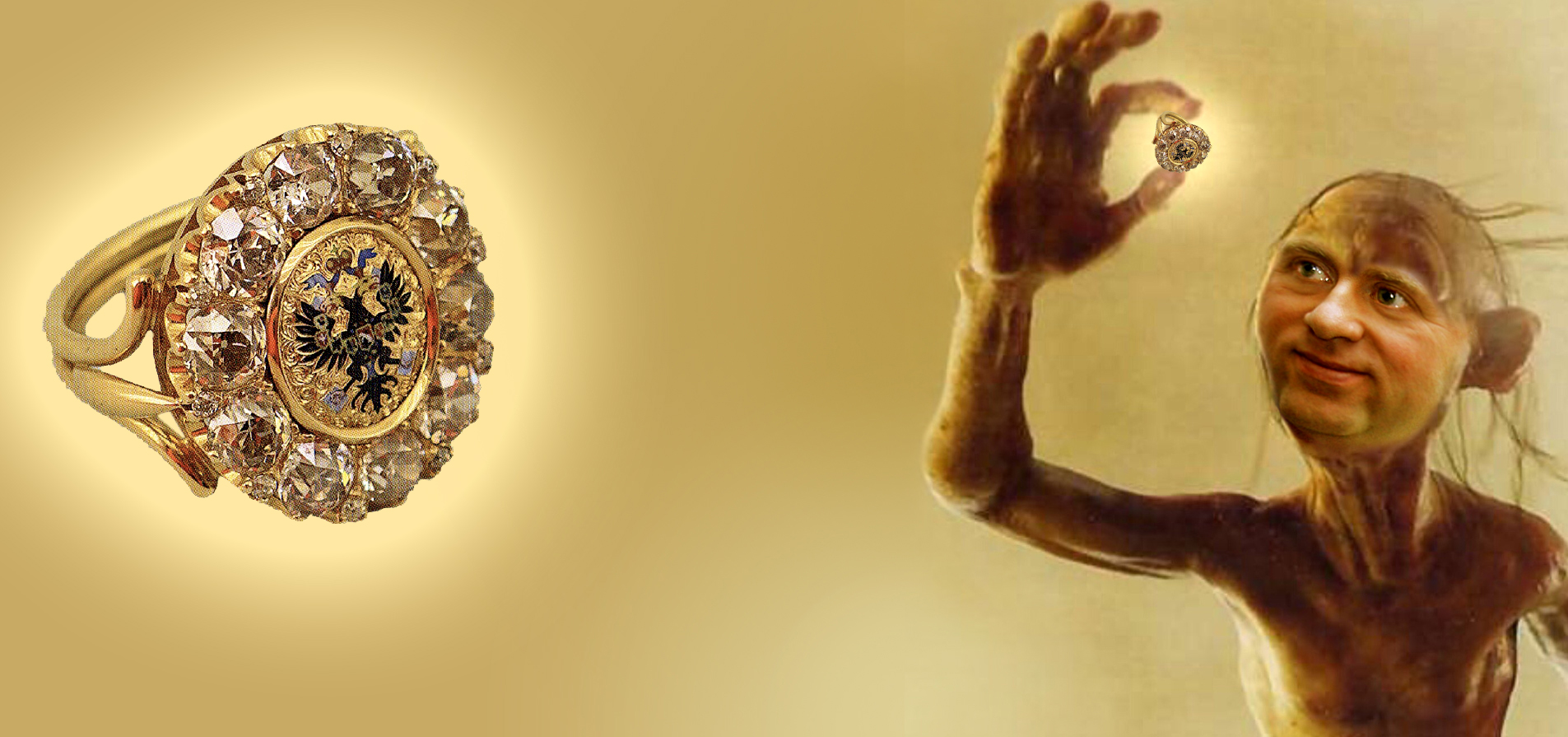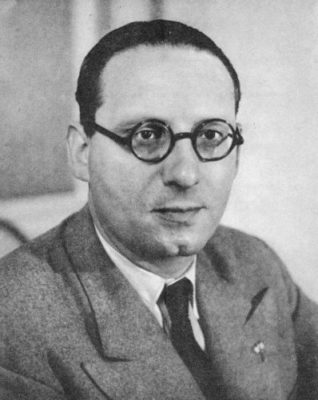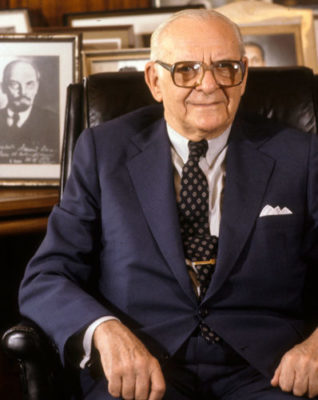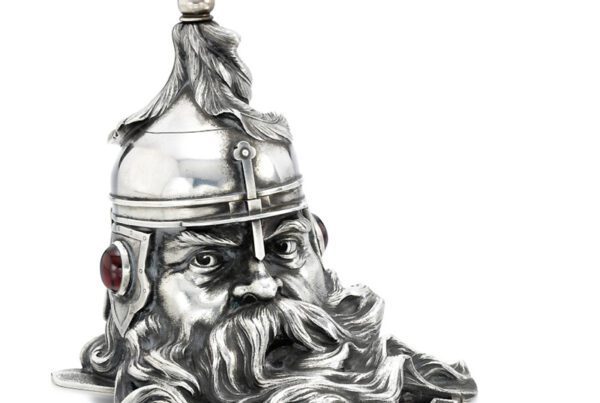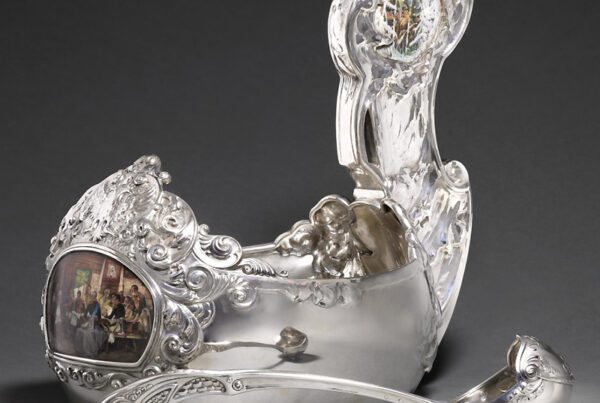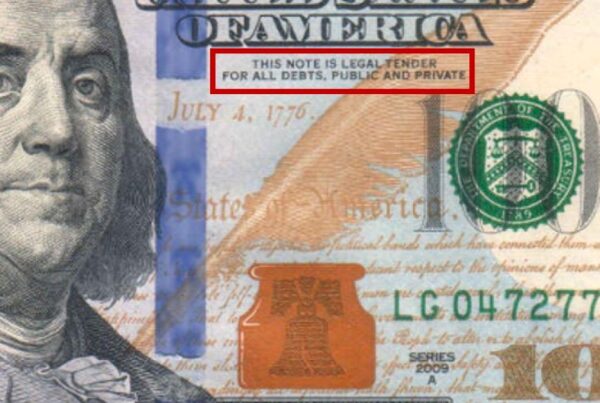Another item worthy of attention is the ‘Presentation Ring with Imperial Eagle’ (catalogue n° 9).

‘Fabergé – Jeweller to the Imperial Court’ Exhibition Catalogue
This bizarre item is ascribed to Fabergé’s Moscow workshop, and was supposedly given to the Tsar by his daughters to mark the Romanov Tercentenary in 1913. According to the Hermitage catalogue the ring features the Moscow assay mark and Fabergé hallmark, and is engraved on the back with the mention PAPA OTMA 1913 and the Nicholas II monogram.

In attempting to pass this ring off as a genuine Fabergé, Professor Ivanov is counting on the public’s ability to ignore and forget. The ring appeared only a decade ago – on 29 November 2010 – at Christie’s Russian Art sale in London (lot 240), catalogued as ‘possibly late 19th century, apparently unmarked.’ I can hardly imagine Christie’s failing to spot any Fabergé hallmarks, let alone the large engraving on the back. Several other items from the Ivanov ‘Fabergé’ collection were acquired at the same auction, including the silver-gilt mounted guilloché enamel and bowenite clock shown in the Hermitage (catalogue n° 42). All surprisingly survived without added signatures or monograms “enhancing” and “beefing up” their provenance and value, typical Ivanov’s modus operandi. So any idea of poor Professor Ivanov falling victim to some forger or other can be ruled out.
The fraudulent transformation of a clunky, anonymous ring into a piece of Imperial Fabergé is not just blatant but ridiculous – as it is with all the other items I have discussed previously. The forgery is evident due to the ring’s indifferent quality, which falls lamentably short of Fabergé’s standards, and to the absurd OTMA engraving. I have already pointed out that no commemorative gift of this sort would have been presented without the participation of the Tsar’s son and heir – and also that no Imperial gifts signed OTMA are known outside Prof. Ivanov’s collection. In trying to give the Imperial provenance visual embodiment, the forger supplemented this engraving with a large Imperial monogram. This may have appeared on gifts made on behalf of the Tsar – but never on items presented TO him.

Fabergé Gold and Enamel Imperial Cigarette Case presented by Emperor Nicholas II to Gustav Baron von Senden-Birban (1847-1909)
The ring’s provenance (as stated in the catalogue) is equally intriguing. It was supposedly sold to a certain Pierre Pucheu by the notorious Armand Hammer in 1933. I had never heard of this Monsieur Pucheu; he turns out to have been a wealthy industrialist and Nazi collaborator. In 1941/2, as Interior Minister of Vichy France, he approved the execution of Jewish hostages and members of the Resistance. He would be executed himself, by firing squad, in March 1944.
- Pierre Pucheu
- Armand Hammer
It is not clear how and in what circumstances the staunchly anti-Semitic, anti-American, anti-Communist Pucheu could have struck a deal with a Jewish American Communist sympathizer like Hammer. It is an even greater mystery that a criminal politician arrested in 1943, then executed in March 1944, could have transferred his Fabergé collection to anyone: the death-sentence pronounced by a military tribunal called for both the termination of life and alienation of property. Howsoever an item owned by a convicted Fascist ended up in the hands of Professor Ivanov, I suggest it be transferred to the relevant authorities without delay, for a judicial investigation into its origin.

